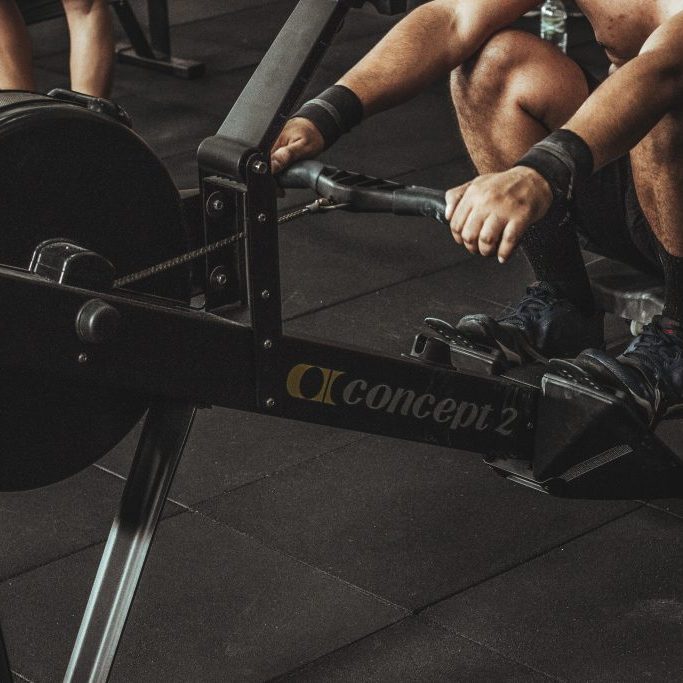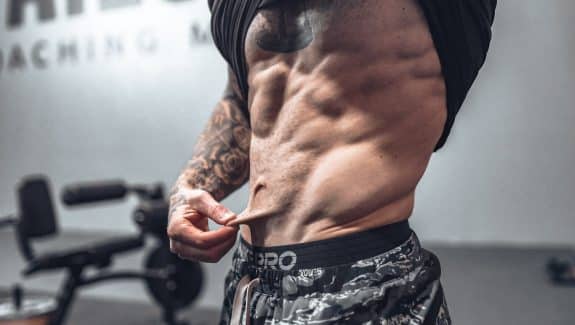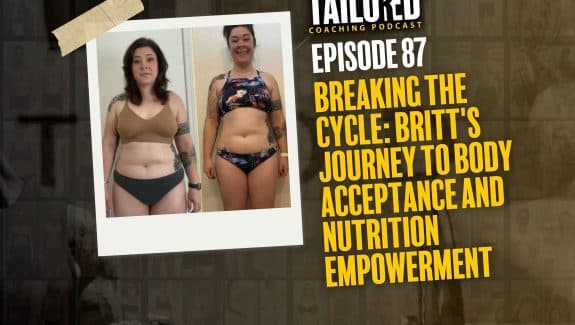Cardio vs. Lifting. Which is better for fat loss or improved body composition?
As with any smart answer, from a coach with a critical mindset, who takes the whole picture into account. There is no one “best” approach and the answer is usually “it depends”.
They can be both beneficial for fat loss, although one does trump the other. (which I’ll get onto later)
Each modality will help improve body composition, both improve cardiovascular health, boost metabolic rate and burn calories. But it’s how you structure resistance training or cardio that will determine your results and will have the biggest impact on your body, performance, and recovery.
In this blog, I’m going to dive into more detail about each, and explain the benefits and potential drawbacks. Then I’m going to show you what’s optimal and provide you with some example weekly splits that you can incorporate into your training.

CARDIO
Lets cut right to the chase, let’s get stuck in and talk about cardio.
I’m going to break cardio down into HIIT and LISS. I’m sure you know the abbreviations of each, but let me recap on how to perform each as this can sometimes get misconstrued.
HIIT is carried out for short bursts of high-intensity effort, spaced with low-intensity effort. An example would be 20-sec max effort followed by 2 mins of low intensity, which can be repeated for 5-8 intervals.
LISS is carried out for a long duration at a steady pace usually lasting anywhere between 20-40 mins and can be anything from walking, biking, or using the cross-trainer.
There are even debates on which form of cardio is better for fat loss.
The common conception is that HIIT will burn more fat, as it’s more intense and requires a higher energy output, right?
Maybe.
HIIT does initiate an EPOC effect (post exercise oxygen consumption) where the body still “burns” calories after the session. Although the EPOC effect is certainly real, it’s been shown that it equates to a little amount overall.
An 80 min HIIT session increases EPOC for up to 7 hours and burns an extra 80 calories. I don’t know about you, but that doesn’t seem like a lot to me. 80 minutes of HIIT is a LONG time, a normal session lasts up to 40-45 mins which will likely increase calorie burn for up to 40 calories. Again, doesn’t seem worth it to me, especially as there are drawbacks from performing too much HIIT.
There is no EPOC effect from performing LISS, but you will likely burn more calories during the session, but this might not make much difference.
HIIT is more intense, and you burn more calories AFTER the session, LISS isn’t as intense but you’ll burn more calories DURING the session. So what’s more effective for fat loss?
Both! It’s been shown they both burn around the same amount of calories. HIIT is
performed for high-intensity efforts spaced with very low-intensity efforts which balance out total energy expenditure compared to LISS.
You’re going to burn calories no matter what. This is important as it comes down to preference, what you enjoy doing, and what fits into your schedule as this will increase adherence.
However, what’s most important is what happens to fat balance over a 24 hour period, which can be controlled by diet.
Like with any modality there are benefits and drawbacks. You may have heard that doing too much cardio will stall your gains, or that performing HIIT is the most effective way to burn calories? (which I hope you can see isn’t true)
Let’s look at some of the benefits and drawbacks of cardio when performing HIIT or LISS.
HIIT is slightly more time-efficient than LISS as you’re alternating high intensity effort spaced with low intensity efforts which can be sustained from anywhere between 30-40 mins max. If you’re doing it correctly and with intent.
HIIT has been shown to reduce appetite from increased levels of lactate and blood glucose, along with a reduction of ghrelin. HIIT can be more fun too which may increase the likelihood of you turning up to train.
Having said that, HIIT is high intensity in nature and that high intensity has to be recovered from in order for you to see an adaptation. This can be redundant if you’re following a resistance training program or want to perform at your optimum outside of the gym. The nervous system will take a hit, stress hormones will constantly be elevated, you increase the risk of injury, and your performance will decrease over time.
LISS, on the other hand, is quite the opposite. It doesn’t induce a stress response in the body, it’s low impact and easy on the joints, it improves mental wellbeing and speeds recovery by flushing lactate and pumping fresh blood around the body. LISS may take slightly longer to perform and can be quiet boring which may decrease adherence over the long term.
Cardio as a whole has a host of health benefits, mainly improving cardiorespiratory fitness which is a strong predictor of all-cause mortality. This is a must from a longevity standpoint but may not be so efficient if you want to improve your body composition.
This is because the body adapts very efficiently to cardio, and when the body is more efficient at fuelling your sessions, you’ll use less energy and burn fewer calories. You may have experienced this yourself? You start out on your 30 minute cardio session which you find difficult at first, you may have noticed a change in your body or an increase in your metabolism? But over time you do it again and again, training at the same intensity, for the same amount of time and it becomes easier. You don’t notice the same adaptations that you did before and the change in your body composition is minimal.
This is your body adapting to that stress, it reserves as much energy as possible and will burn the fewest amount of calories possible to support that energy output. One thing to do would be to do even more cardio, for longer, but that wouldn’t be time-efficient and the body will eventually adapt to that as well. Adding variety is hard too, as there are only a few pieces of equipment you can use and only so far you can walk in a day!

LIFTING
Now we’ve covered cardio, let’s look at resistance training.
Male, Female, young, old, athlete or desk jockey, I feel everyone will benefit from resistance/strength training. (I may be a bit biased here as I’m a strength coach) But it’s true!
In fact, I’ll go as far as saying that strength is the foundation that all other attributes of physical ability are built upon. Agility, speed, power and endurance will be affected either directly or indirectly by a base level of strength. A solid resistance training program should not only increase strength, but help improve body composition, prevent injuries and enhance performance.
Resistance training builds lean muscle tissue, boosts metabolic rate, regulates hormone production, sex drive, builds healthy bone mass, increases strength, improves posture and even increases longevity. The list can go on!
Lifting weights is key from a body composition standpoint as the more lean muscle tissue you carry the faster your resting metabolism. This is because muscle is much more metabolically active than fat and the body will use more calories to keep it on your frame. Simply put, you will burn more calories at rest than someone who doesn’t lift weights, and receive all the hormonal benefits along with it.
One of the major benefits you get from resistance training that you don’t from cardio is the elevated levels of anabolic hormones, which stay elevated for up to 15-30 mins post-training. Specifically testosterone, growth hormone and insulin-like growth factor (IGF-1) which are critical for tissue growth, increasing strength, force production, resetting baseline hormonal concentrations and improving insulin sensitivity.
Improving insulin sensitivity is paramount for both health and aesthetic change, as the more sensitive you are to insulin the better you are able to store glucose as glycogen (muscle fuel) and less glucose will float around the bloodstream which could potentially get stored as body fat if you are not active.
Another benefit of resistance training is that the body doesn’t adapt to the stimulus very easily (unlike cardio) This is huge as there are so many variations inside of resistance training. Volume and Intensity will change to elicit a desired result. Different phases of training improve on different
Attributes, exercise selection, sequence, modalities such as tempos and even equipment can all be manipulated to add variety and a different stimulus to your training. The body does accustom to training adaptations but it is constantly being challenged from so many variables, that it’s easy to introduce a different stimulus which elicit another adaptation.
The benefits of resistance training are unprecedented, but like most things, there are some potential drawbacks.
Junk Volume. Sloppy form will stall progress and prevent you from reaching your full potential. Focusing on perfect technique, and the mind-muscle connection can literally change your physique. Don’t underestimate how important this is.
Volume, Intensity and frequency aren’t equated for. If you’re not factoring in these essential qualities then you’re cutting yourself short and I can pretty much guarantee you won’t build muscle or change your body. Follow an intelligently written program. We have plenty in the Boom Boom Elite Membership Site.
Risk of injury. Lifting heavy with poor form will increase your chances of injury and/or setbacks. Bad back, sore knees, and achy shoulders are the usual culprits when you’re either lifting too heavy for long periods of time with sub-par form.
Let’s look at how we can structure resistance training and cardio into your training week, so you can train smart, focus on recovery and perform optimally.
What weekly training split (if any) and current activity level must be taken into account and I’ve based these examples on the most popular training splits. A three-day full body and 4 day upper lower split.

PROGRAMS
4 day upper/lower split with HIIT
→ Monday: Upper Body
→ Tuesday: Lower body, HIIT
→ Wednesday: Rest
→ Thursday: Upper body
→ Friday: Lower body, HIIT.
→ Saturday/Sunday: LISS or rest.
Adding HIIT on the back of leg day keeps these days as your taxing nervous system days. This allows for enough recovery in between sessions, so you don’t get burnt outcome to the end of a training week.
4 day upper/lower split with LISS days
→ Monday: Upper Body
→ Tuesday: Lower body
→ Wednesday: LISS
→ Thursday: Upper body
→ Friday: Lower body
→ Saturday: LISS
→ Sunday: Rest
This example uses LISS as an active form of recovery in between strength sessions. I like this split as the LISS days improves recovery and keeps your energy expenditure high, without taxing the nervous system.
3 day Full Body
→ Monday: Full Body
→ Tuesday: LISS
→ Wednesday: Full Body
→ Thursday: LISS
→ Friday: Full body
→ Saturday/ Sunday: LISS or rest.
The reasons for this split are the same as above, except it’s a three-day full body split.
3 day full body with HIIT
→ Monday: Full Body
→ Tuesday: Rest
→ Wednesday: Ful Body, HIIT
→ Thursday: LISS
→ Friday: Full body, HIIT
→ Saturday: LISS
→ Sunday: Rest.
This example places HIIT mid-week and on a Friday. In my experience most people are still dragging their tail on Monday from the weekend and starting the week with a high-intensity day can be a detriment to performance and the days after. Wednesday works well and adding an extra on a Friday allows for an extended recovery over the weekend.
[For a free full article all about the different pro’s and con’s of each of these training splits (+ more) – Click Here]
CONCLUSION:
Overall I think if you want to improve your body composition then a focus on building and maintain lean muscle tissue is key, which comes from resistance training. This should be your number priority as the benefits of metabolism, regulating hormone production, building strength and increasing longevity are invaluable.
If you enjoy cardio then you can add 1-2 sessions HIIT a week. The issue with HIIT is that it is very intense and that intensity has to be recovered from. There isn’t much difference in caloric burn than LISS and performing too much HIIT can be at the detriment to a resistance training program.
If you’re following a solid training program, are working on increasing your NEAT, controlling your diet, and taking time to recover then you have your bases covered.
My stance is you always want to add the minimal effective dose to elicit the response you want. This makes things easier, more achievable, sustainable and motivating. You’re more likely to be adherent and stay consistent, which will ultimately get you results.























































































































































































































































































































































































































































































